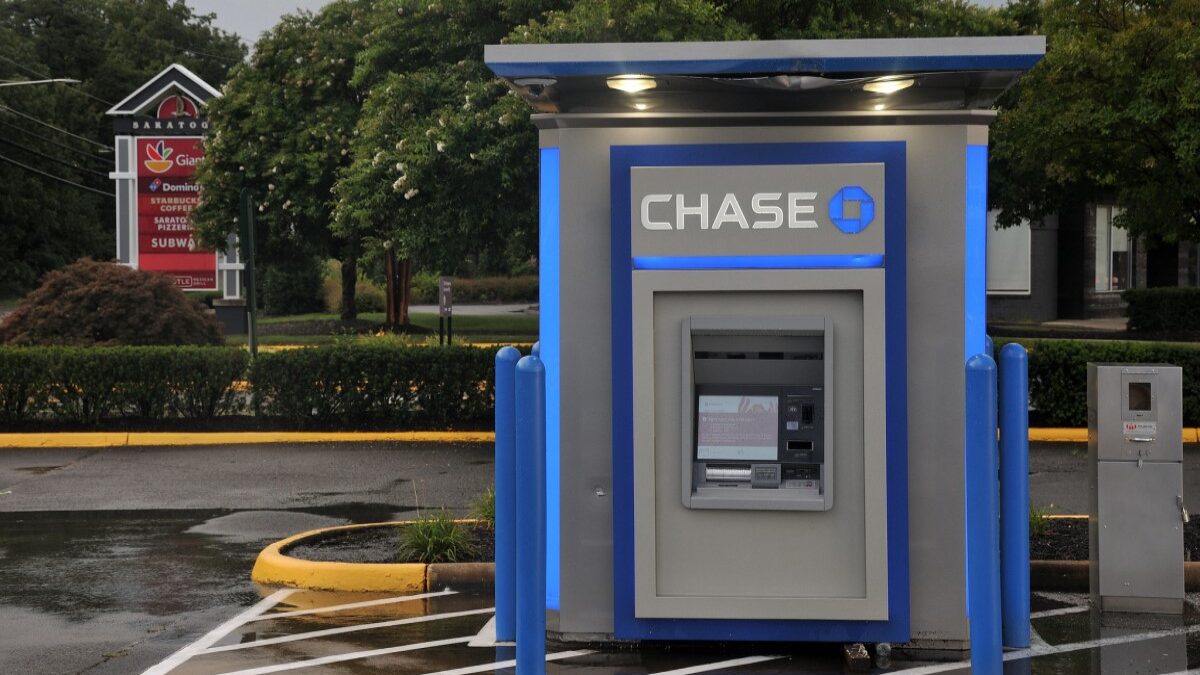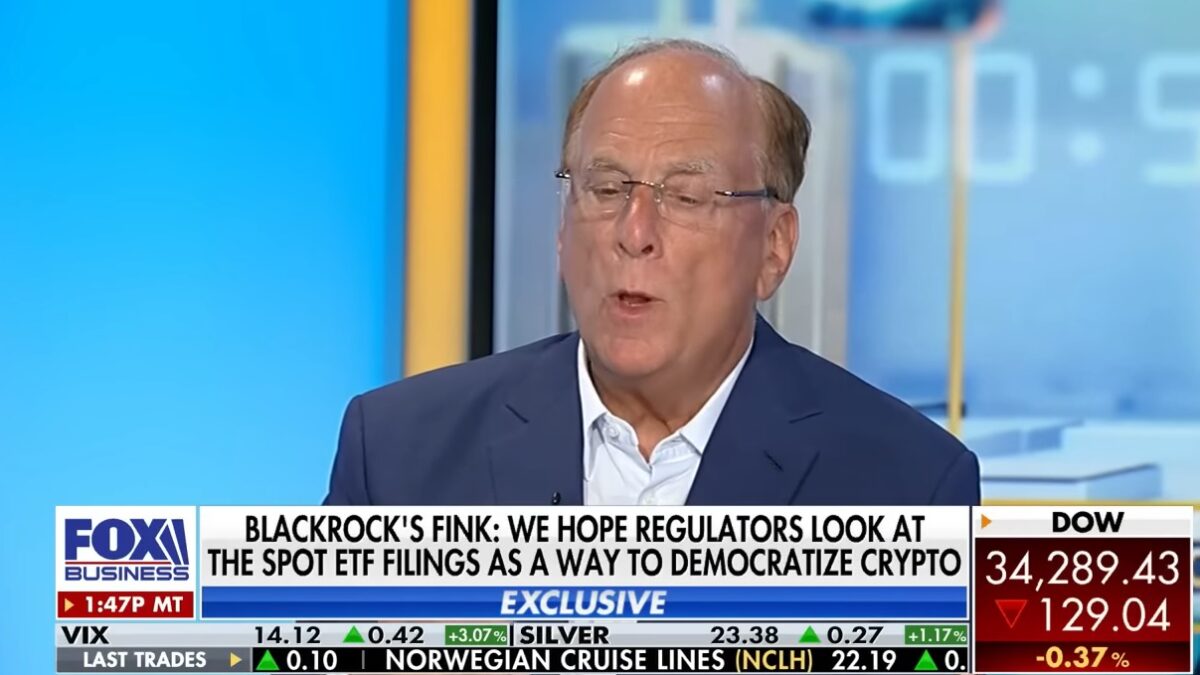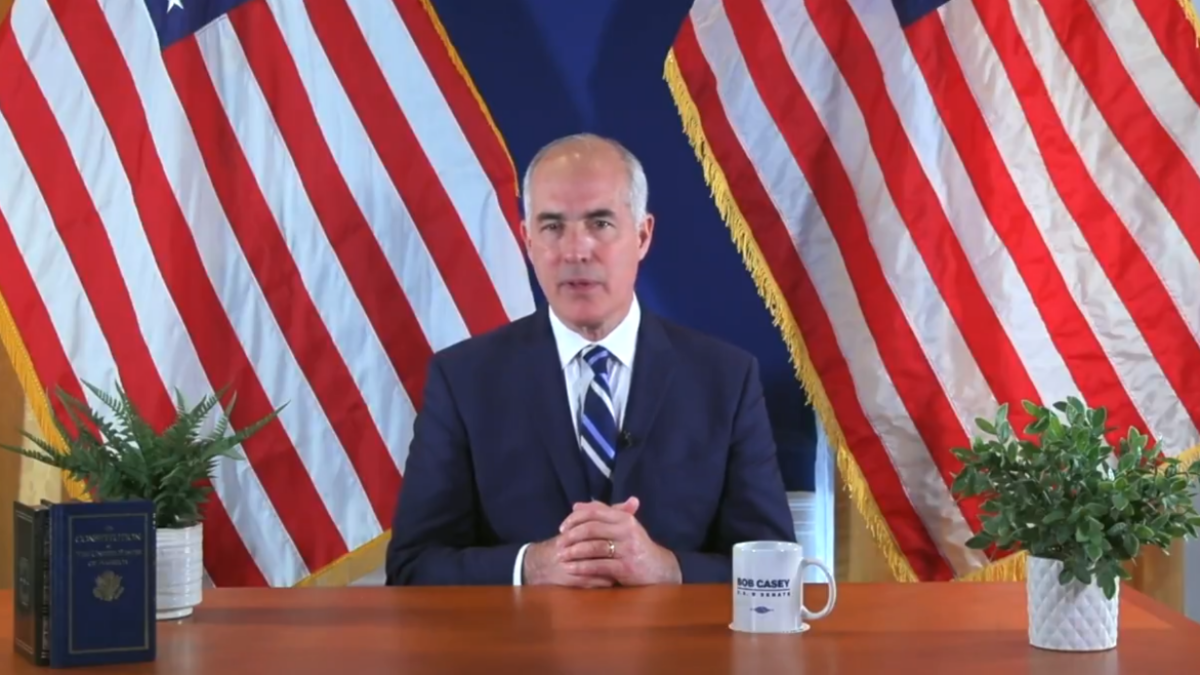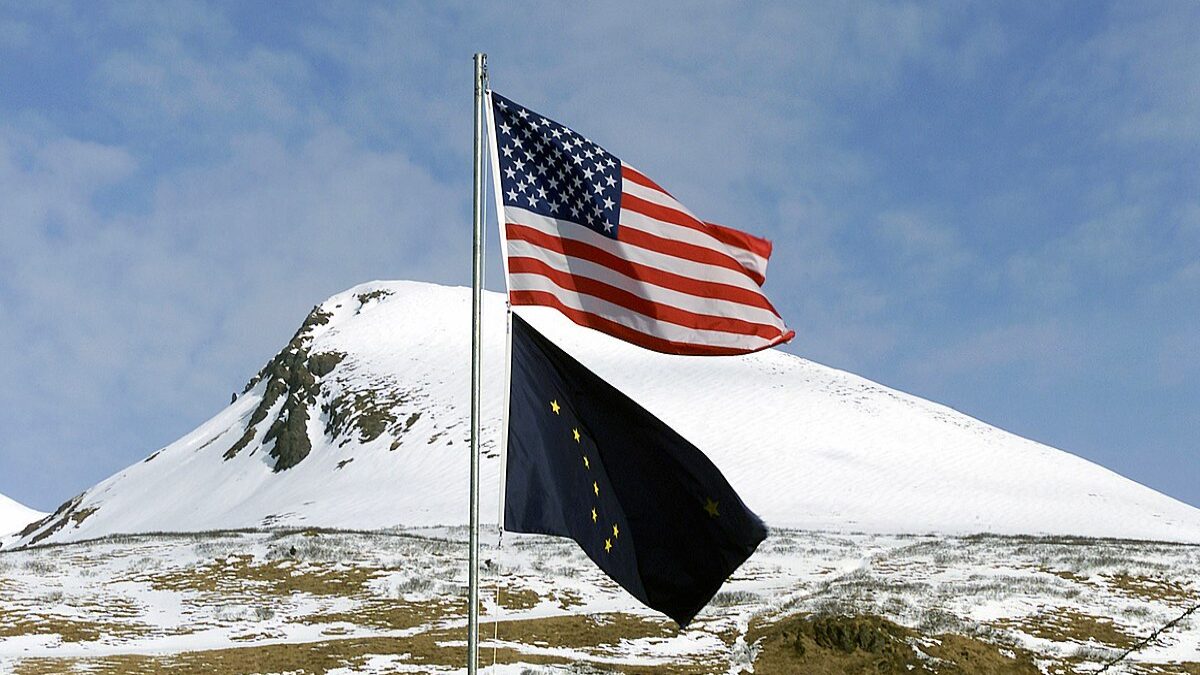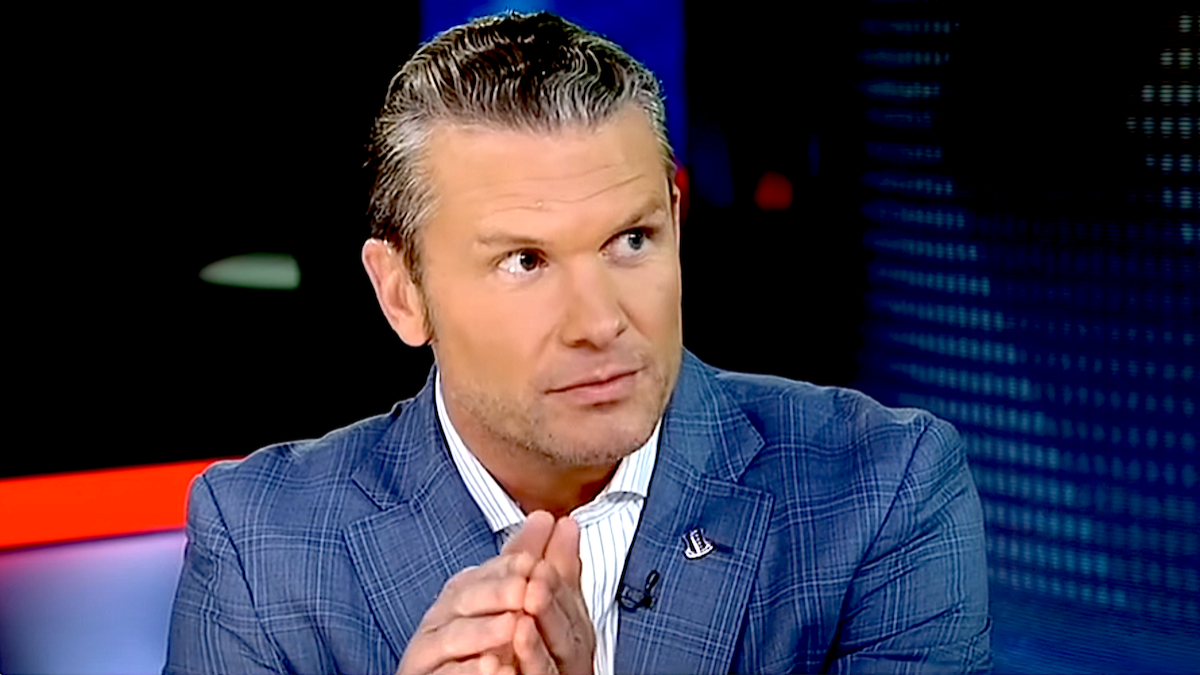
Last week, New York Rep. Alexandria Ocasio-Cortez (D–NY) joined Sen. Bernie Sanders (I–VT) in a call to nationalize a big chunk of America’s financial system. The proposal reached across generational and ideological boundaries. As has come to be typical of the AOC-Sanders faction, this proposal is an answer to a question no one was asking. It is a solution from a bygone time that is no longer needed in a modern economy.
Like most socialist ideas, AOC’s proposal is backward. However else you might criticize socialist ideas in years gone by—and there has always been plenty of things to criticize—they used to at least have the virtue of being innovative. Karl Marx and Vladimir Lenin wrote about doing things that had never been tried before.
Unfortunately, people eventually tried them. Socialists in the 21st century have an advantage their predecessors lacked: they can learn from the past and see which of these policies failed. They can adjust and try to do better.
Their minds are also less nimble than the revolutionaries of 1848 and 1917. If they have greater knowledge at their fingertips, they are also less able to use it. The socialist movement has become reactionary and ossified, calling for the same old solutions to problems new and old. They who accuse conservatives of an unreasonable attachment to tradition and history now harken to a mythic past and blind themselves to the many holes in their socialist story. Their movement has not had a new idea in a century.
Old Problems, Failed Solutions
That brings us back to postal banking, a moribund idea dusted off by the 29-year-old Bronx Bolshevik. It is a hoary idea from the high tide of American progressivism, one many on the left thought was a great innovation in 1911. Warren Henry wrote on Monday that a federally supported savings system, coming as it did in the wake of a serious financial panic and in an age where bank deposits were uninsured and tenuous, filled a void in the banking sector that nothing else did. It also achieved a populist aim of reducing the power that was being concentrated in New York and other big city banks.
AOC’s contention that people need a “public option” for finance was arguably true 100 years ago, but even then it was a contentious plan. The law enacting it was extremely limited, capping interest rates at 2 percent and not allowing a customer’s account to exceed $500 (or about $13,000 today).
Moreover, the lion’s share of deposits accepted by the Postal Savings System was then redeposited in local banks. Another fact unmentioned by the Little Octobrist: these were just savings accounts; no checking, no lending, and none of the other services of banks. The government merely acted as a go-between and guarantor for the traditional banking sector in the field of savings. (For a more detailed history of the Postal Savings System, see this 2019 working paper by Steven Sprick Schuster, Matthew Jaremski, and Elisabeth Ruth Perlman.)
The Conditions Necessitating It No Longer Exist
Schuster et al. explain that even in its heyday, the system was not particularly popular:
From 1911 through 1929, the program alternated between periods of slow growth and stagnation. The program experienced a surge in popularity during the Great Depression as depositors sought guarantees on their funds. A second surge occurred in the 1940s, when the historically low interest rates during the war turned postal savings into an appealing investment, followed by a prolonged decline until the program ended in 1967.
It’s worth exploring why the program was popular at all, and whether those reasons apply today. The first surge in growth came during the Depression, a period of catastrophic economic decline and upheaval that changed many people’s lives and finances for the worse. Banks failed often in the Depression’s early days, and back then when a bank closed, your money disappeared with it. Given that state of affairs, the existence of a “public option” for savings that was guaranteed by the federal government must have seemed like a godsend for small depositors.
But consider what else happened to banks around that time. In 1933, Congress created the Federal Deposit Insurance Corporation (FDIC). Since then, savings and checking accounts in banks have been insured by the FDIC up to $250,000. Banks still fail from time to time, but when they do the FDIC acts as a receiver and the depositors’ accounts are never threatened. Americans today view bank failures today as an inconvenience, not a life-threatening event. The FDIC did its job and eliminated the major rationale for government banking.
The other bump in usage came in the 1940s, when Postal Savings accounts began to pay higher interest than private banks. This could still happen and is probably the only good reason for a depositor to choose the post office over a bank. Savings account interest is laughably low these days, and a return of 2 percent would be very nice.
But is that feasible? The current composite rate on Series I savings bonds is 1.9 percent, so lending the government money at 2 percent (which is effectively what a savings bond or government savings account does) is not much out of line. But again: the option already exists. Savings bonds are available at any bank or directly from the government. If people want this service, they can have it right now.
The Return of Localism?
If the historical grievances that led to postal banking are gone, what about modern problems? Banks are more consolidated and more distant from depositors than ever, and their mergers with investment banks since the repeal of Glass-Steagall in 1999 introduce risk and instability (although not to FDIC-insured accounts). Anyone who has ever tried to sort out a problem with a big bank knows that all of the mergers and “synergies” have created a system where the customer is ignored when he’s not outright defrauded.
It’s not unreasonable for an average American to want to opt out of that system. Localism is coming back in many sectors, and banking might be no different. Is this a way that postal banking could be of use to the ordinary citizen?
Alas, no. For one thing, moving your account from Wells Fargo to the U.S. Postal Service merely replaces one unaccountable bureaucracy with another. Do you think dealing with Citibank is hard? Try fighting with the Post Office. The creaky old system that struggles to break even despite a monopoly on mail delivery would fare no better when given a new mandate in the banking sector.
As for localism, the post office may have branches in nearly every town and city, but it is no more local than any federal bureaucracy. For real localism, would-be depositors can look to community banks, just as they always have. They can also, with increasing ease, choose to bank at credit unions.
Credit unions, especially, should appeal to people who fear the influence of powerful big city banks. They are smaller and are owned by the depositors, who elect members to run them. The first credit unions in America were founded around the same time as postal banking began here, and likely for similar reasons. They have proven more popular than the government-run system, however, and serve about 100 million Americans today. As Sanders has said in what he thought was a boast, postal savings accounts never served more than 4 million depositors.
The Rise of Credit Unions
Joining a credit union requires being in its field of membership, but that is a less restrictive term than it used to be. While you once had to work in a certain industry or for a certain employer, many credit unions now permit new members to join based simply on living or working in a certain geographic area. Joining one is easy, and there are many to choose from in most areas. For people who want to escape big banks, credit unions are a simple option that doesn’t require big government.
So with all that said, is there any role for a “public option” in banking? With credit unions growing and multiplying, there is little need for it in urban and suburban areas. But as Dan Foster of National Review noted on Twitter recently, “access to brick and mortar banks is an issue in rural areas.” While ATMs and online banking make it possible to visit the branch far less often than we used to, there is still a need occasionally to drop into a teller’s window. In sparsely populated areas, that’s not easy.
But rather than getting the post office mixed up in an unfamiliar line of business, we could use the government’s real estate to help bring banking closer to the people. Banks or credit unions could rent kiosks at rural post offices, just as they do at supermarkets. Renting extra space could help serve rural communities while bringing in some additional revenue to the post office. It’s a win-win that helps a few folks without expanding government.
Let’s Not Mince Words
If all Ocasio-Cortez and Sanders wanted was to bring banking services to more people, everything we know about banking tells us that postal banking is an inferior choice compared to credit unions and community banks. But since when have socialists ever cared about making a private-sector product better or more accessible? This isn’t about that.
Ocasio-Cortez and Sanders are not looking for a new solution to a real problem, they’re looking for a new excuse to impose the old discredited solutions that their ideology demands. Creating a “public option” in banking sounds good to incrementalists on the left for the same reason a “public option” in health care sounds good: it adds to the government’s power.
Armed with the ability to outspend any private competitor, tax-supported public options can soon undercut and crowd out almost all competition. Consider how the public option in education works: many people can’t afford to pay property taxes and tuition to private school. The public option becomes the only option for all but the rich.
It is probably a good idea for regular folks to leave big banks for the local, responsive, privately run options of community banks or credit unions. That’s going to be a better fit for both parties, and it is an option brought about by choice within a free market.
Put government’s thumb on the scale, though, and these other options will quickly disappear. Postal banking can either be the unattractive option that was put out of its misery in 1967 or, worse, made so attractive through the government’s deficit spending that it becomes the only option. That might suit the socialists, but it’s a harmful scenario for everybody else.



